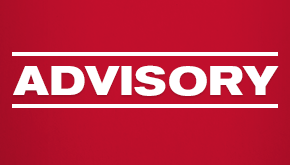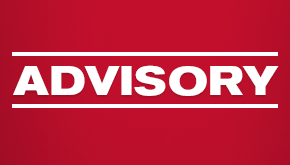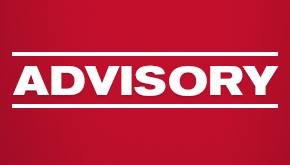Revised China Patent Law Makes Litigation More Attractive
In China, intellectual property rights enforcement includes administrative actions, as well as civil and criminal litigation. On Oct. 17, the Standing Committee of the National People's Congress approved the Fourth Amendment to the People's Republic of China Patent Law, which will become effective June 1, 2021.
It's important to review the pros and cons that exist between administration actions and litigation in patent rights enforcement, as well as changes to the China Patent Law and their effect on enforcement strategies. Similarly, companies should consider making adjustments to maximize the benefits of the changes, especially in considering patent litigation to enforce patent rights in China.
Overview of Patent Enforcement in China
There are five common options to enforce patent rights in China.
The first enforcement option is to file an online report. Large online retailers like Alibaba and Taobao have established portals for online reporting of intellectual property infringement. Their reporting procedures are similar to those of U.S. online retailers.
The second option is to send a cease-and-desist letter. A Chinese translation accompanying the letter may help with the effectiveness of such a letter.
The third option is recordal of patent rights with China Customs. Unlike customs in most countries which only inspect imports, China Customs inspects both imports and exports. If goods are suspected of infringing recorded IP rights, China Customs will notify the consignee or consignor of the goods and may suspend the clearance process of the goods and initiate its own investigation.
The other two options are administrative actions and litigation.
Administrative Actions
Administrative actions are additional IP protection tools provided by the Chinese government. China IP — patents, trademarks and copyrights — is enforced through separate local governmental agencies. For patents, the enforcement agency is the local intellectual property office.
Upon receipt of a complaint letter, the agencies will locate and notify the alleged infringer, and verify the existence and extent of infringement. The administrative agencies are authorized to issue injunctions, impose fines and confiscate infringing products. If either the rights holder or the alleged infringer disagrees with the administrative orders, either party may file a lawsuit with the court on the administrative orders.
The agencies also have authority to mediate monetary damages, although they lack authority to issue monetary damages. If mediation on damages fails, either party may file a civil lawsuit asking the court to determine the monetary damages. The evidence verified and obtained by the agencies during the administrative actions may be admitted in the civil litigation for monetary damages.
Under Article 70 of the new China Patent Law, the local intellectual property office may combine disputes on infringement of the same patent, and may request that the superior local intellectual property office handle patent disputes that extend beyond the geographical boundary of the local intellectual property office.
Litigation
Criminal litigation is unavailable for patent infringement, although it is available for patent passing off and other IP infringement, such as trademark infringement and copyright infringement. China courts do not have a separate federal court system parallel to state courts. Cases are heard by IP courts established in Beijing, Shanghai, Guangzhou and Hainan, or otherwise by collegial panels specializing in IP cases established in some intermediate people's courts.
Because the Chinese judicial system does not have a discovery process, the actual damages are difficult to determine due to the lack of information on sales and profits. As a result, statutory damages are often granted, the maximum of which is ¥1 million (approximately $152,300).
Significant Changes to Patent Litigation
The new China Patent Law includes significant changes to patent litigation such as provision of punitive damages, increase of statutory damages, and burden shifting in damages determination.
Under Article 71, for willful patent infringement, in serious cases, punitive damages of one to five times the compensatory damages may be awarded. In situations where compensatory damages are difficult to determine, the court may award statutory damages in the range of 30,000 RMB (approximately $4,571) to 5 million RMB (approximately $760,000), increased from the current range of 10,000 RMB (approximately $1,523) to 1 million RMB (approximately $152,300).
The Patent Law has also changed the provisions on burden of proof and the calculation method of damages, and reduced the difficulty of providing infringement proof for patentees. The law states that, in order to determine the amount of compensation, the people's court may order the infringer to provide account books and information related to the infringement when the rights holder has tried its best to provide evidence and the account books and information related to the infringement are mainly in the control of the infringer. If the infringer does not provide account books or if false account books and materials are provided, the people's court may determine the amount of compensation based on the claims and evidence provided by the rights holder.
Considerations and Recommendations
Administrative actions are relatively cheap and effective compared to litigation. The turnaround time is also relatively short; approximately three to four months.
Before reporting infringement to and requesting administrative actions from the agencies, a rights holder should conduct a preliminary investigation and collect evidence on infringement. A preliminary investigation can cost anywhere from
$2,000 to over $10,000. The Chinese government does not charge for reviewing a complaint letter. A law firm usually charges between $3,000 and $8,000 for representation during an administrative action. The cons of administrative actions are that administrative agencies do not have authority to issue monetary damages.
Administrative action will likely remain an effective and cost-effective option in patent rights enforcement. The changes to the law for combining patent administrative actions may help with coordination across different geographical areas and conserve resources in seeking enforcement.
In contrast, China patent civil litigation can be expensive and time-consuming, although far less than its U.S. counterpart. A China patent civil litigation usually costs between $150,000 and $300,000, and lasts about one year for litigation of one trial level.[1]
Because statutory damages are usually awarded and the upper limit of ¥1 million is relatively insignificant, the purpose of litigation currently is not to recover monetary damages, but to seek a court order of injunction and establish a model case against other infringers. The changes in the Patent Law significantly increase the advantage of patent litigation in enforcing patent rights through provision of punitive damages, increased statutory damages, and burden shifting in damages determination.
With burden shifting in damages determination, statutory damages may no longer be the default damages awarded to the rights holder. However, even with the increased upper limit of statutory damages of 5 million RMB and potential award of punitive damages, a rights holder may still have a concern about attorney fees incurred during the litigation and how they are stacked against the potential damages award.
China law is unclear on whether attorney fees may be awarded in patent litigation, where the Patent Law (Article 71 of the new Patent Law and Article 65 of the current Patent Law) states that the damages should include reasonable expenses incurred by the rights holder in stopping the infringement. In China, each party is usually responsible for its own attorney fees incurred during litigation. Recently, courts have started to award damages that include expenses incurred to a winning party, which includes a portion of attorney fees.
With burden shifting and potential award of punitive damages and attorney fees, patent litigation may become an attractive option for patent rights enforcement in China. Litigation always involves risk. In determining whether to initiate patent litigation, the strength of the case should be carefully evaluated.
Another consideration for the rights holder is enforcement of judgment in China, especially for international and foreign companies. The infringer may have transferred assets out by the time a judgment is awarded. A rights holder may consider seeking a court order to freeze assets of the infringer at the start of the litigation, though the court may require a guarantee from the rights holder before issuing such an order.
In sum, the new Patent Law increases the strength of patent enforcement through administrative actions and patent litigation. With the changes in the new Patent Law and recent trend of awarding attorney fees in patent litigation, patent litigation is positioned to become an increasingly effective tool in patent rights enforcement.
Sabrina Zhang is a partner at China Kintec IP Laws LLP.
[1] Under the China legal system, a trial has two levels, which are called the first trial and the second trial.


































